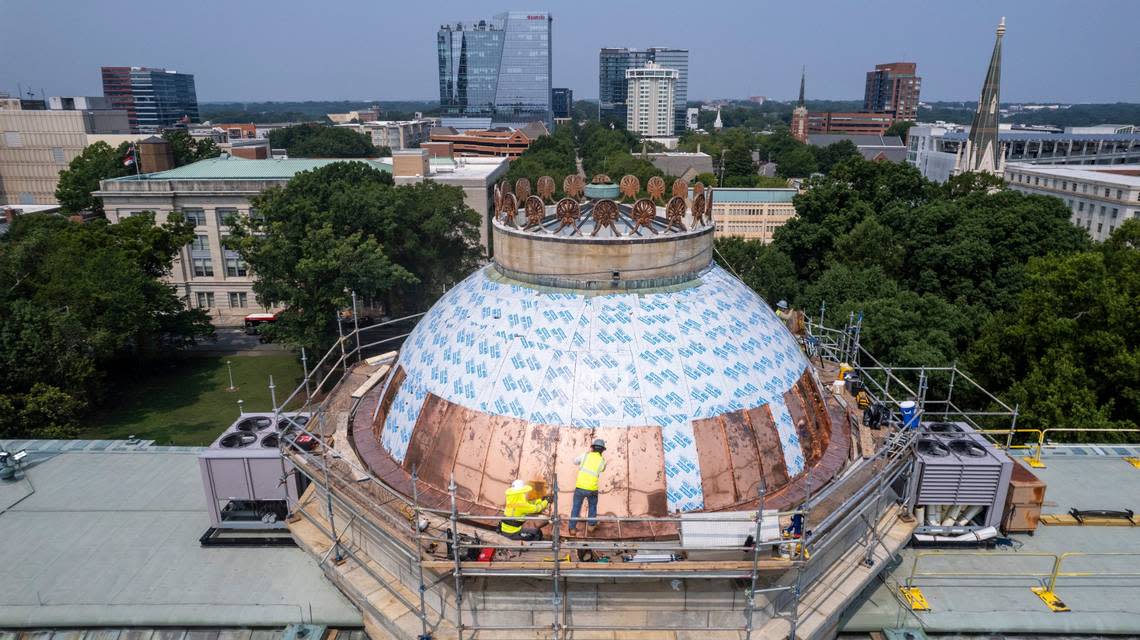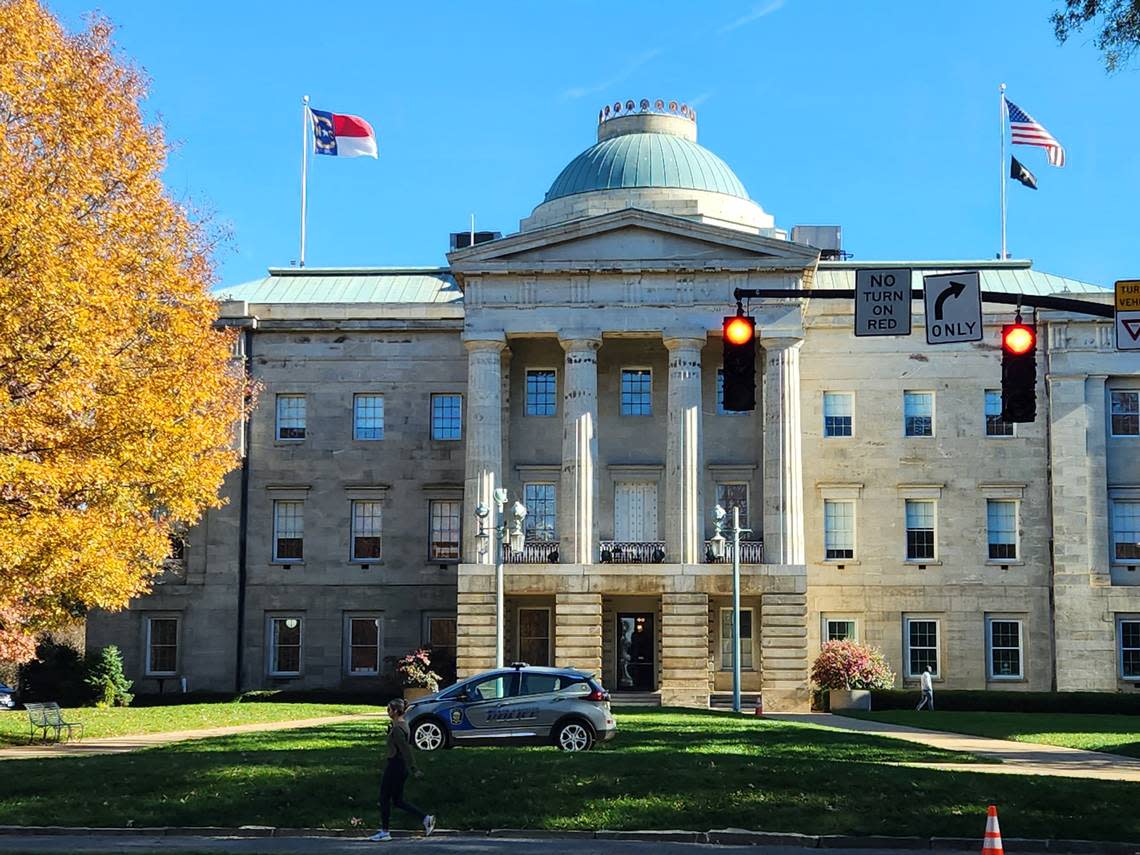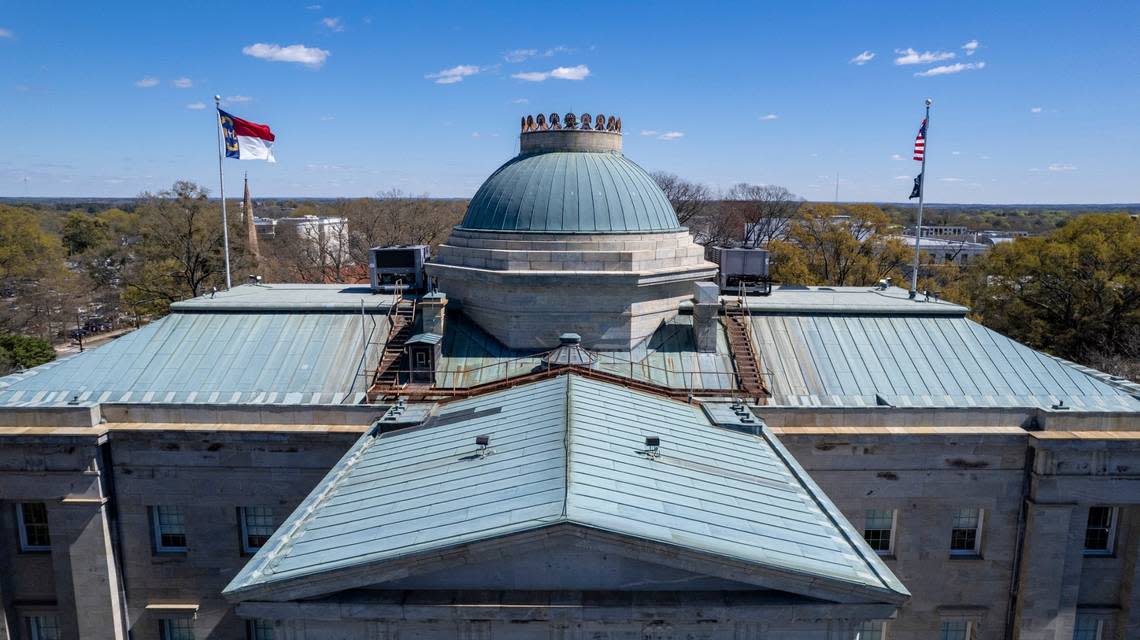Shiny copper replacement for Raleigh’s iconic Capitol dome is almost complete
Under construction for the past year, the North Carolina State Capitol dome replacement is set to be finished this summer. That means the building, closed to the public since May 2023, could resume tours as soon as July.
The copper dome, which had been a bluish-green color from decades of oxidation, was replaced along with the rest of the roof. If you notice the copper dome and roof seems more, well, copper-y, it is because you can see more of it with the removal of the rooftop HVAC system’s air handlers, and because it will be several years before it becomes oxidized.
The project costs about $10 million and is overseen by the Legislative Services Office, which is part of the General Assembly. Legislative Services Officer Paul Coble, who is also a former mayor and Wake County commissioner, said the work should be complete in July.
“It’ll be really cool-looking,” Coble told The News & Observer, noting that other items on the roof, like vents, will also feature copper.
What was most critical, however, he said was to repair stonework deterioration and stop roof leaks. Coble said in his opinion, the Capitol should be fully restored to how it originally looked inside as well, which would require money from the legislature to pay for any future work on interior walls and office space not original to the building.

Copper repurposed as souvenirs
Every few decades, the dome needs replacing. The last time, copper was saved and turned into jewelry. As of this spring, there were still a few copper earrings shaped like dogwood flowers available for sale at the North Carolina Museum of History, which is across the street from the Capitol.
Coble said that copper from this project has been set aside for the State Capitol Foundation if the group wants to turn the copper into souvenirs, jewelry or other items to sell.

He also set aside some copper to make commemorative items for members of the General Assembly.
State lawmakers were given small pieces of copper shaped like North Carolina after the replacement of the Legislative Building roof, which is also copper and changes color over time.
Capitol history
Enslaved people built the Capitol building in the 1830s. It opened in 1840 after the work of multiple architects, at a total project cost of $532,680.
The General Assembly stopped meeting there regularly after the Legislative Building was completed in 1963 about a block away, on Jones Street. The Capitol now is operated as a historic site with tours — which will resume again when the work is done. It’s also the location for ceremonies, including the occasional ceremonial legislative session. The governor also has staff offices there.

The grounds of the Capitol include several war memorials and statues. Three Confederate statues were removed, first by protesters in 2020 as part of a wave of Confederate statues being taken down, with the rest removed by Democratic Gov. Roy Cooper, citing safety reasons. Under a law signed by Cooper’s predecessor, Republican Gov. Pat McCrory, Confederate statues were only allowed to be relocated for safety reasons or to equivalent prominent locations.
A long-stalled plan to build an African American monument on the Capitol grounds has received funding in various budget proposals over the past five years, but in the 2023 budget process, only made it through the Senate, without being proposed for funding by the House.
Every year, more than 100,000 people visit the Capitol for tours and other programs, according to the Capitol Foundation. The most common visitors to the grounds, researchers have found, are schoolchildren.
The Capitol’s exterior walls are made of granite from a Raleigh quarry, and the building is 97.5 feet tall from the floor to the honeysuckle crown of the dome.

